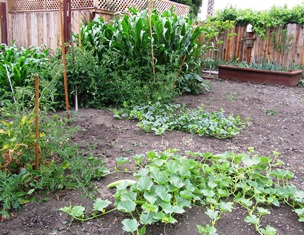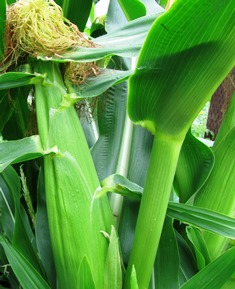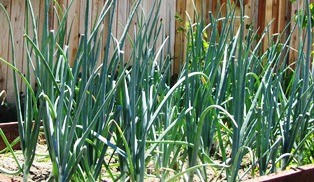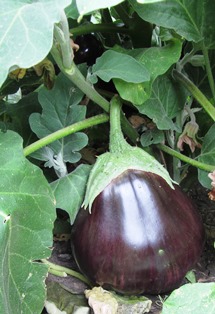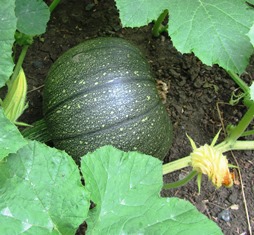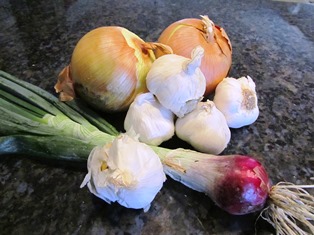Garlic–A Staple of Any Kitchen Garden
No proper kitchen garden would be without a section for onions (whether spring green onions, chives, or bulb onions) or garlic. Both kitchen staples are easy to grow. In several raised beds measuring four feet by six feet, I’ve planted garlic amidst a few jalapeno pepper plants. Garlic benefits other plants in the garden as well.
BEST TIME FOR PLANTING
In spring, after all danger of frost has passed, plant garlic cloves. Or, plant in late fall when you might be planting other types of bulbs. Some European gardeners swear that garlic must be planted on the shortest day of the year, the winter solstice.
I planted my garlic in late February/early March, long before my tomatoes, eggplant, pumpkin, and squash (the heat lovers) went in. The green garlic tops shoot out of the soil quickly and grow fast.
HOW TO PLANT GARLIC
Plant each clove from a bulb upright in soil roughly one-inch deep. Space the cloves four-inches apart. The growing site must receive full sun. Give the garlic a good watering each week. Garlic is a beneficial companion plant in the garden because of allicin (a property that acts as a fungicide and pesticide), especially when planted near lettuce and cabbage where it will deter aphids.
HOW TO HARVEST AND STORE GARLIC
When the tall green shoots of the garlic become dry and turn brown, it’s time to harvest the garlic bulbs. After you’ve pulled the bulbs out, shake off the dirt (never wash) and then hang the bulbs in a dark, dry place. Then when the bulbs are completely dry, you can braid the paper-dry tops to hang the garlic in the kitchen for easy access.
Stressed-out Tomatoes and Corn
This has been a tough season for my tomatoes because of the heat wave California (and the southwest) recently endured and the gophers that showed up early.
The heat topped out at 105 degrees Fahrenheit on my patio this week. The patio isn’t far from my garden where I have heirloom tomatoes and corn growing. There are cherry and grape tomatoes, slicing tomatoes, a tomatoes for paste. I’m also growing there and elsewhere on the property patches of corn, eggplant, pumpkins, summer squash, and other veggies.
Just when the second planting of corn in my garden had reached the fragile pollination stage, the heat wave hit. Such extreme summer heat stresses corn. In just one week, despite all the watering, an entire section of the corn dried, the moisture of the ears diminished, and some of the dried tassels blew away in the hot wind.
I’m worried that with the global warming problem, we Northern Californians who have always enjoyed the Mediterranean climate here will be experiencing more of this intense heat in coming years.
Garden Tuck-ins and New Plantings
From our Henny Penny Farmette organic garden, I am already harvesting tomatoes, squash, eggplant, peppers, cantaloupe, and ears of corn. But just because I’m harvesting crops now doesn’t mean I’m finished planting for the year.
In fact, in late June and July, while I am enjoying the healthy summer bounty from our garden, I like to think about what else I might plant, like more corn as a succession planting, or tucking in something new where onions or lettuces have been pulled.
In Northern California, we have the dry season (hot weather) and rainy season (cool and wet). The weather is temperate and I have learned to plant vegetables according to when they grow best.
This is the perfect time to plant beans, corn, melons, parsnips, potatoes, pumpkins, radishes, rutabaga, and turnips.
Then as the months of the fall season approach, I plan to tuck in a few cool season crops (bok choy, cabbage, carrot, fava bean, lettuces, peas, radicchio, and spinach) and root vegetables such as turnips, leeks, and onions.
 Facebook
Facebook Goodreads
Goodreads LinkedIn
LinkedIn Meera Lester
Meera Lester Twitter
Twitter






